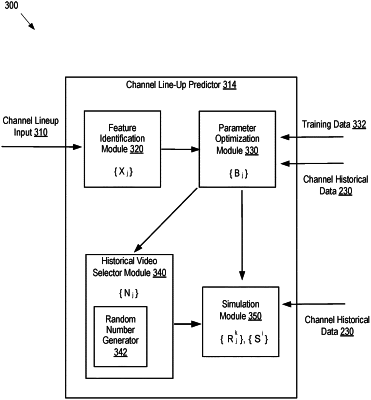| CPC H04N 21/64738 (2013.01) [H04N 21/2407 (2013.01); H04N 21/2408 (2013.01); H04N 21/251 (2013.01); H04N 21/26216 (2013.01); H04N 21/47202 (2013.01)] | 21 Claims |

|
1. A method comprising:
identifying, by a processing device, a plurality of past videos posted via a first group of channels during a historical time interval, wherein each channel of the first group of channels comprises at least one of the plurality of past videos, and wherein the first group of channels has at least one common characteristic with a second group of channels;
predicting, using a trained model executed by the processing device, for each channel of the second group of channels, an average number of access requests that a future video to be posted via a respective channel of the second group is to receive within a first time interval after posting;
performing, by the processing device, a plurality of simulations to determine, for each channel of the second group of channels, a plurality of adjusted average numbers of access requests that the future video to be posted via the respective channel of the second group is predicted to receive within the first time interval after posting, wherein each of the plurality of adjusted average numbers of access requests is determined using an adjustment factor computed based on:
a number of access requests received by a past video, from the plurality of past videos, posted via a respective channel of the first group, and
the average number of access requests that the past video is predicted, by the trained model, to have received;
determining whether the second group of channels satisfies a predetermined access criterion based on the plurality of adjusted average numbers of access requests for each channel of the second group of channels; and
allocating, by the processing device, one or more computational resources to the second group of channels based on whether the second group of channels satisfies the predetermined access criterion.
|